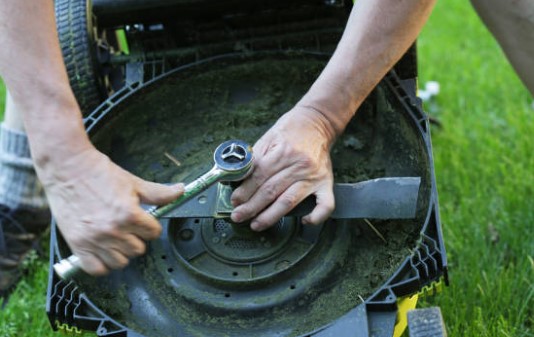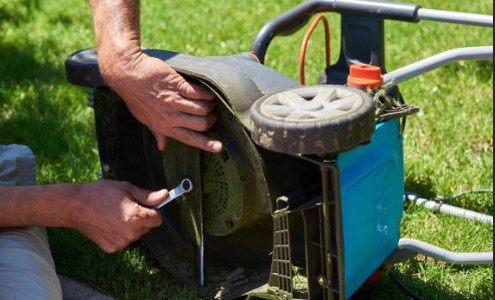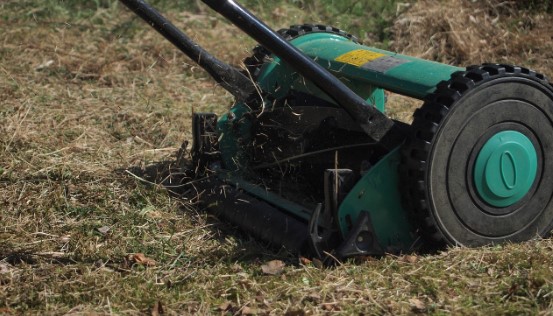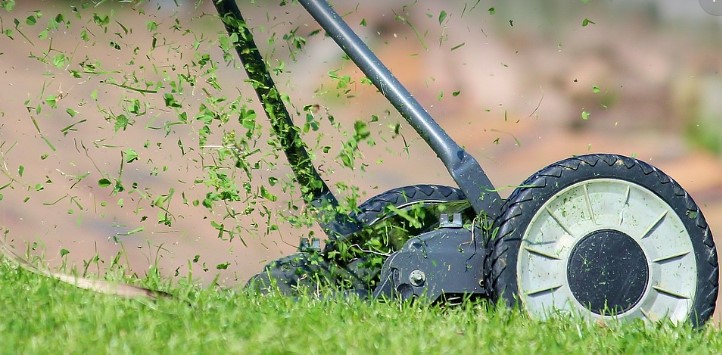How to Sharpen Lawn Mower Blades Effectively for a Lush and Vibrant Lawn
A well-maintained lawn is a pride for any homeowner, and one of the key factors in achieving that lush and vibrant yard is having sharp lawn mower blades. The quality of your lawn will suffer, and the life of your mower’s engine will be shortened if you use dull blades. In this comprehensive guide, we’ll explore the importance of a sharp mower blade, signs that indicate it’s time to sharpen, and a step-by-step process to effectively sharpen your lawn mower blades at home.
Signs It’s Time to Sharpen Your Lawn Mower Blades
Uneven Grass Height
Uneven grass height after mowing is a telltale indicator that your lawn mower blade needs sharpening. The blade is no longer cutting the grass consistently if you see areas that are noticeably higher or shorter than the rest of the lawn. An uneven and messy lawn is the consequence of dull blades that shred the grass instead of cutting it cleanly.
Torn or Frayed Grass Blades
As the blade loses its sharpness, it becomes less effective in cutting the grass cleanly. This can cause the grass blades to tear or fray instead of getting cleanly cut. When you inspect the lawn after mowing, you may notice ragged or brown tips on the grass blades, indicating that the mower blades are due for sharpening.
Excessive Vibrations and Noises
Dull blades can lead to increased vibrations and rattling noises during mowing. When the blade becomes imbalanced due to uneven wear or damage, it can cause the mower to shake more than usual. Excessive vibrations not only make the mowing experience uncomfortable but can also affect the overall performance and lifespan of the mower.

Difficulty in Mowing
If you find yourself having to make multiple passes over the same area to achieve a clean cut, it’s a clear sign that the blades are not sharp enough. Dull blades struggle to cut through the grass efficiently, leading to a laborious mowing experience and potentially leaving behind uneven patches of grass. Regularly checking for these signs and promptly sharpening your lawn mower blades when needed will not only improve the overall appearance of your lawn but also enhance the mower’s performance and longevity.
Grass Clippings Clumping
Dull blades can cause grass clippings to clump together and accumulate under the mower deck instead of being evenly dispersed on the lawn. This clumping effect not only affects the visual appearance of the lawn but can also impede the grass’s ability to receive sunlight and essential nutrients, leading to potential lawn health issues.
Increased Fuel Consumption
The motor of a lawnmower has to work more to get the same cutting results with dull blades as with sharp ones. Because of this, the mower’s gas consumption can go up. If your fuel economy suddenly drops, check the condition of the blades and think about getting them sharpened.

How to Sharpen Lawn Mower Blades Effectively in 7 Steps
Step 1: Mower Disconnection and Preparation
Before starting the sharpening process, ensure your safety by disconnecting the ignition wire from the spark plug. If you’re using a cordless mower, remove the battery pack. For gas engine mowers, drain the gas tank to prevent any accidental engine start. Safety is paramount during this process to avoid potential injuries.
Step 2: Exposing the Blade Mounting Bolt
Protect yourself by carefully tipping the mower on its side to gain access to the blade mounting bolt. After using a lubricant like WD-40 penetrant and waiting about 10 minutes, the bolt should be easier to remove.

Step 3: Take the Mower’s Blade Off
To prevent the blade from turning, use a wood block to wedge between the end of the blade and the inside surface of the mowing deck. Alternatively, use a short length of 4 x 4 lumber for the same purpose. Loosen and remove the blade mounting bolt, keeping note of the blade’s orientation for reinstallation.
Step 4: Cleaning the Mowing Deck and Blade
The underside of the mowing deck should be scraped clean with a narrow-bladed putty knife before the blade is sharpened. Get rid of the dried grass, mud, leaves, and everything else that’s accumulated. Apply penetrating oil and scrub the lawnmower blade with a stiff-bristled brush to ensure it cuts smoothly.
Step 5: Sharpen the Blade
Clamp the blade securely in a bench vise to stabilize it during sharpening. Now, you can use a drill-powered blade sharpener, a grinder with a 60-grit flap disk, or simply a file. Work on both cutting edges of the blade to achieve a sharp cutting edge.

Step 6: Balancing the Blade
After sharpening both sides, the blade must be balanced. Vibrations and engine strain might be caused by blades that aren’t properly balanced. The blade’s balance can be checked by suspending it from a bolt, awl, screwdriver, or other instrument held in a vice. If the blade is flat, then the grind is probably even. If it leans, additional grinding will be required to bring it back into equilibrium. Precision blade balance may be achieved with the aid of a lawnmower balancer, a metal cone with many levels.
Step 7: Reinstall the Blade
Reinstall the blade once it’s sharpened and balanced. Before reattaching the blade, clean up the bolt hole. Spray lubricant or bottled compressed air can remove debris and loose rust from the opening. Before tightening the bolt, let any surplus oil flow out. After cleaning the hole, reorient the blade and tighten the bolt. Finally, use a socket and ratchet wrench to tighten the bolt without overtightening.

Tips and Maintenance
Maintaining sharp lawn mower blades is essential for achieving a beautiful and healthy lawn. Along with regular sharpening, the following tips and maintenance practices will help keep your mower blades in top condition and ensure your lawn remains in pristine condition:
Maintaining Sharp Blades
Check and sharpen your mower blades at least once a season or more frequently, depending on usage. Be cautious while mowing to avoid hitting rocks, stones, or other hard objects that can damage the blade. Mow your lawn at regular intervals to maintain a consistent grass height and avoid cutting off too much at once. After mowing, remember to clean your blades to remove grass clippings and debris, preventing buildup that can dull the edges.
Proper Cleaning and Storage
When you’re finished mowing and blade maintenance, clean your mower thoroughly and store it in a dry, sheltered location. Regular cleaning ensures no grass or dirt accumulates, preventing corrosion and damage. Additionally, store the mower with the blades in a safe position to prevent any accidents while it’s not in use.
Final Thoughts
With the provided tips it’s really useful to help you get the hang of how to sharpen lawn mower blades at home effectively – The secret to beautiful, flourishing grass. For the best blade performance and overall lawn care, routine inspection, sharpening, and maintenance are essential. Keeping your lawn mower blades sharp and in good condition so they can make clean cuts every time is essential for a beautiful lawn and is easy if you follow the advice in this tutorial. If you want to get the best results from your mower, check it over and sharpen the blades before each use. Beautiful, well-kept grass can be the focal point of any outdoor living area with the proper attention and care.
Related Articles